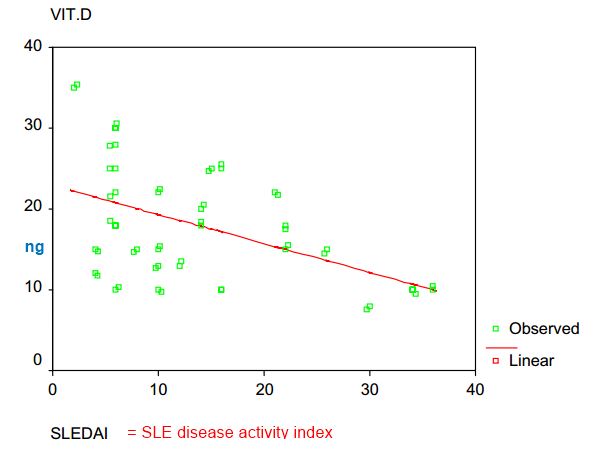It is time to routinely give vitamin D to Lupus patients
Vitamin D Deficiency in Egyptian Systemic Lupus Erythematosus Patients: How Prevalent and Does It Impact Disease Activity?
Integrative Medicine Insights 2016:11 27-33 doi: 10.4137/IMI.S40035
Nouran M. Abaza1, Reem M. El-Mallah1, Asmaa Shaaban1, Sameh A. Mobasher2, Khaled F. Al-hassanein2, Amr A. Abdel Zaher2 and Rania H. El-kabarity3
1Department of Physical Medicine, Rheumatology and Rehabilitation, Faculty of Medicine, Ain Shams University, Cairo, Egypt. internal Medicine - Rheumatology Division, Faculty of Medicine, Ain Shams University, Cairo, Egypt. 3Clinical Pathology Department, Faculty of Medicine, Ain Shams University, Cairo, Egypt.
📄 Download the PDF from Vitamin D Life

BACKGROUND: The emerging role of vitamin D in immunology and autoimmune disorders has been a worldwide interest in the last decade. Systemic lupus erythematosus (SLE) patients are particularly at a delicate position predisposing them to suffer from vitamin D deficiency due to the multiple risk factors accompanying the disease. Whether vitamin D deficiency is also involved as a risk factor for developing SLE and affecting its course is a considerable concern.
OBJECTIVES: The objective of this study was to estimate the prevalence of vitamin D deficiency in SLE patients and its relation to disease.
MATERIALS AND METHODS: In our observational cross-sectional study, serum levels of vitamin D [25(OH)D] in 60 SLE patients and 30 age- and sex-matched healthy controls were assessed and estimated for deficiency and insufficiency at 10 and 30 ng/mL, respectively. Disease activity was evaluated by SLE disease activity index (SLEDAI), irreversible organ damage by Systemic Lupus International Collaborating Clinics/American College of Rheumatology Damage Index (SLICC/ACR DI), and severity by Severity of Disease Index. Fatigue was measured by visual analog scale.
RESULTS: Significantly lower levels of 25(OH)D were found in SLE patients (17.6 ± 6.9 ng/mL) in comparison to controls (79.0 ± 28.7 ng/mL), with a statistically high significant difference (t = -11.2, P < 0.001). High prevalence of vitamin D insufficiency and deficiency was detected as 73.3% and 23.3%, respectively. Vitamin D had a highly significant negative correlation with SLEDAI (r = -0.495, P < 0.001), SLICC (r = -0.431, P < 0.05), and fatigue (r = -0.436, P < 0.05).
CONCLUSION: Vitamin D deficiency and insufficiency were found to be prevalent in SLE patients in our study and related to disease activity and fatigue. If needed, routine screening and consequent repletion of vitamin D are recommended in SLE patients. Restoring adequate vitamin D levels in SLE patients should be more explored as a potential yet simple measure to their usual management to improve their condition.
Snipped from PDF
- “Twenty patients (33.3%) had CNS affection in the form of headache, cognitive dysfunction, and peripheral neuritis,
- another 34 patients (56.7%) had joint affection in the form of arthralgia or arthritis.”
“Fatigue was found to be prevalent in 97.7% of our studied SLE patients”
Patients with autoimmune diseases such as multiple sclerosis, RA, and SLE show low 25-OH vitamin D serum levels. Some studies suggested that adequate vitamin D levels diminished the risk for developing various autoimmune diseases.3,40,41”
“ So, it is time to routinely give vitamin D supplementation to SLE patients after periodic measurement of its level.”
